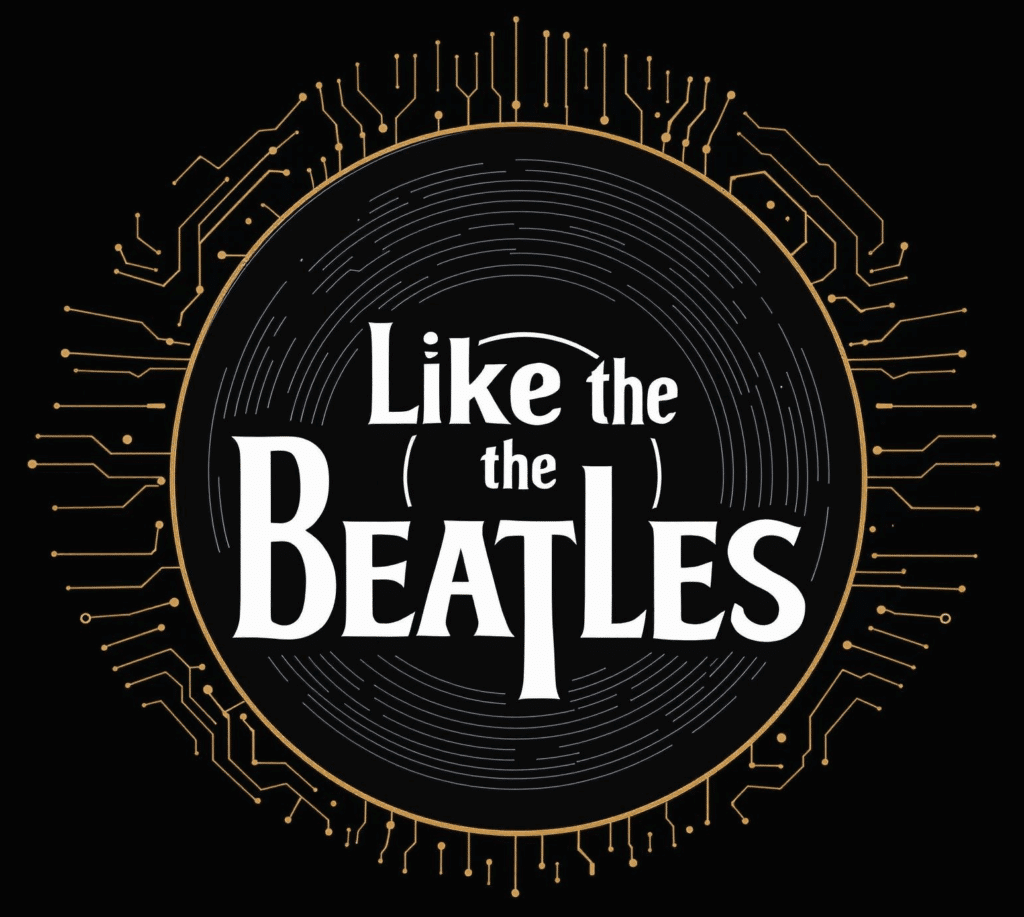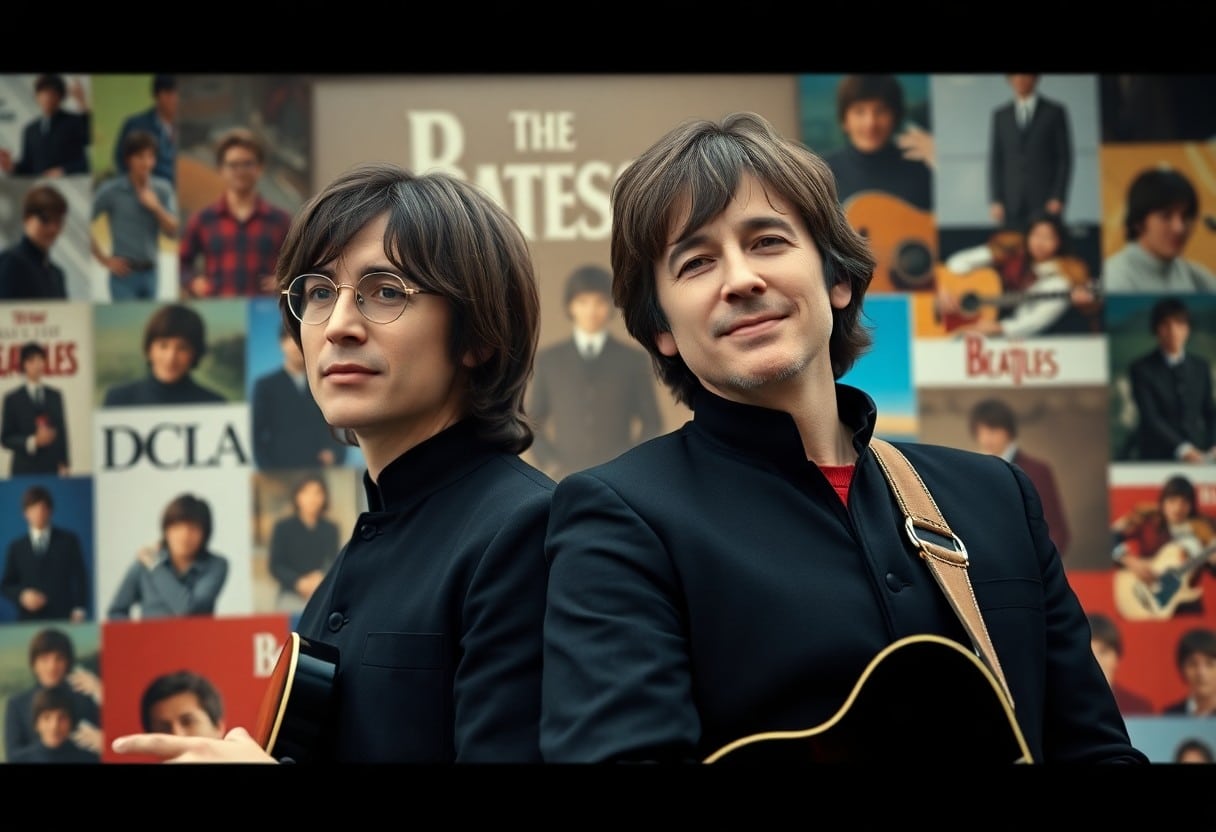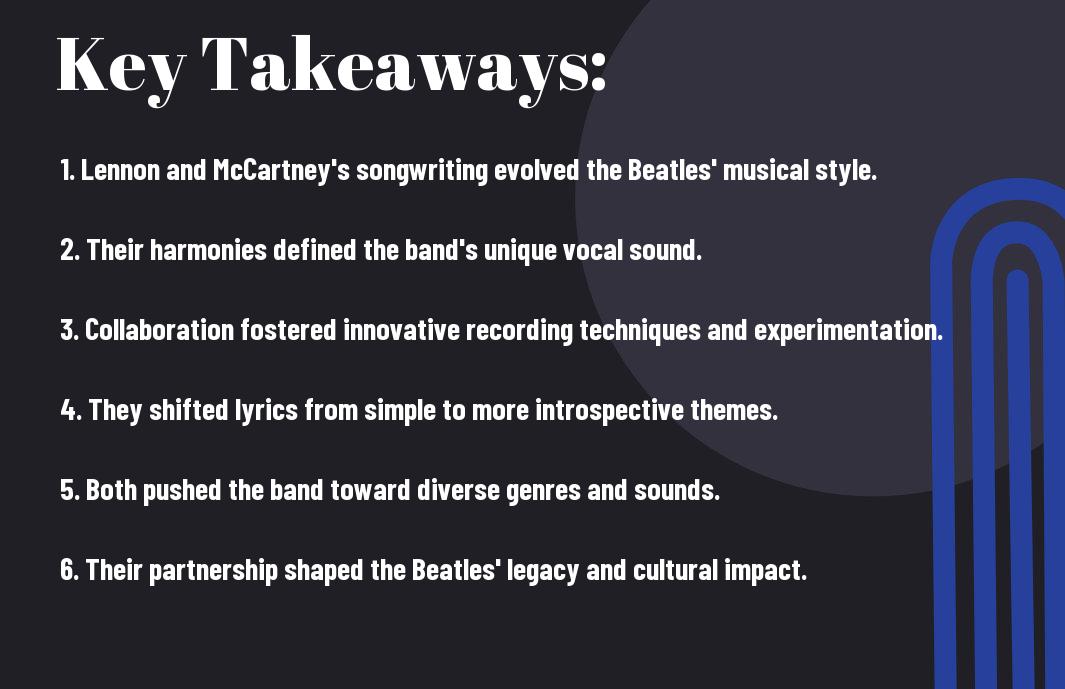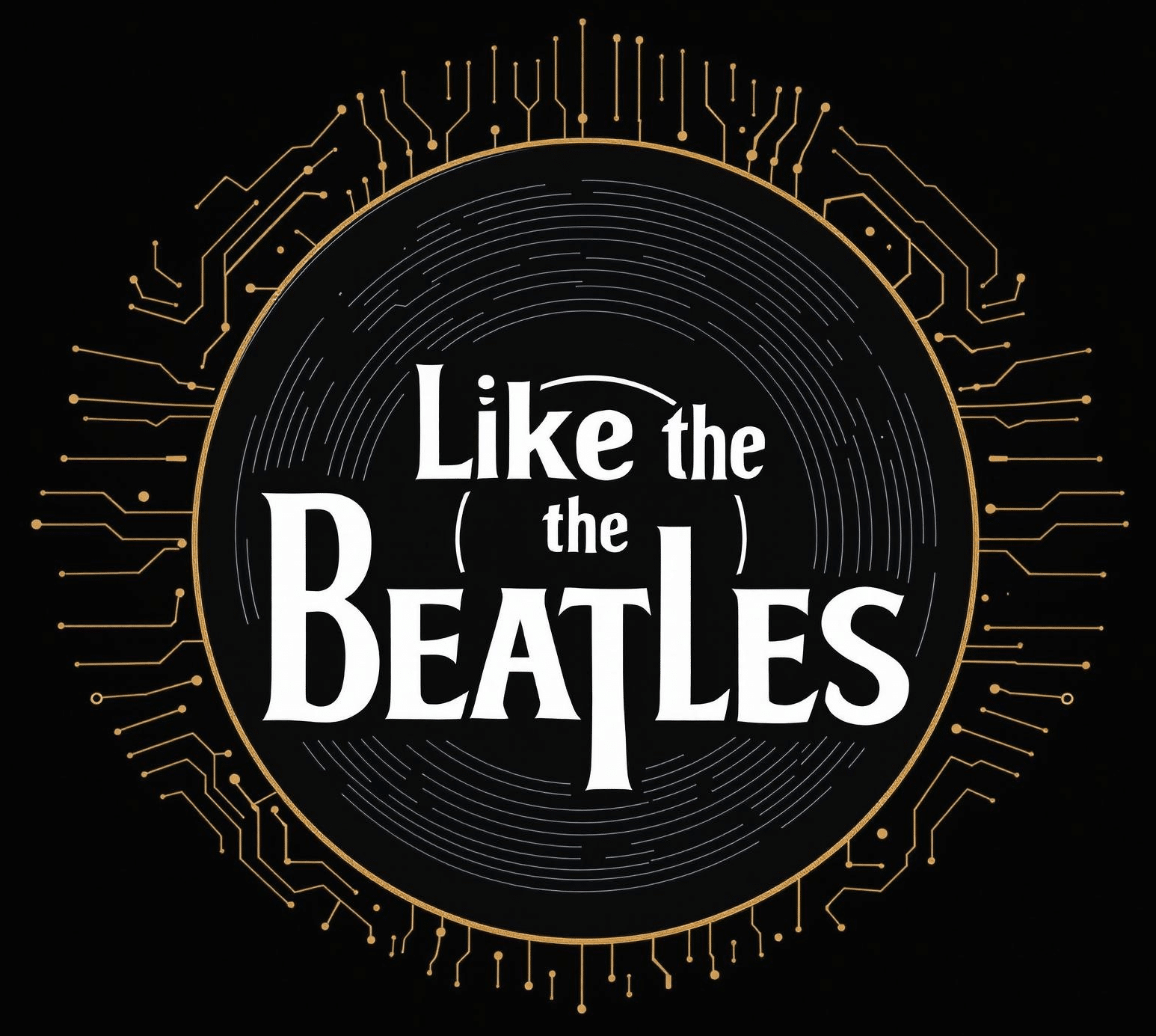Over the years, I’ve examined how John Lennon and Paul McCartney played an instrumental role in shaping The Beatles’ iconic sound and image. From their early days in Liverpool’s Cavern Club, where they captivated audiences with their energetic performances, to their groundbreaking studio innovations that pushed musical boundaries, I believe it’s clear that their partnership not only defined the band’s evolution but also influenced music worldwide. By exploring their collaboration, you’ll discover how their diverse talents turned The Beatles into one of the most influential bands in history.
The Early Days: Formation of The Beatles
To truly appreciate the incredible journey of The Beatles, we must first explore their formation. Beginning in Liverpool, the group started as The Quarrymen, featuring John Lennon and a dynamic ensemble of young musicians. Inspired by the burgeoning rock ‘n’ roll scene, they began to shape their unique sound, eventually evolving into the iconic band we recognize today. This foundational period laid the groundwork for their later success, as their raw talent and energy captured the spirit of a generation yearning for change.
Meeting and Early Collaborations
Behind the scenes, the fortuitous meeting of John Lennon and Paul McCartney was nothing short of serendipitous. Their encounter at a church fete in 1957 sparked an instant connection, igniting a partnership that would reshape music history. They quickly began collaborating on songwriting, blending their individual influences and styles, which led to the development of their catchy melodies and thought-provoking lyrics, setting the stage for their future successes.
Initial Musical Influences
Between the two of them, John and Paul were significantly influenced by various musical styles, including rock, jazz, and folk. They were captivated by early rock idols like Elvis Presley, Chuck Berry, and Buddy Holly, whose sounds inspired their unique approach to music. As they absorbed these influences, they began crafting songs that resonated with a wide range of audiences and established their musical identity.
It is fascinating to consider how these early influences shaped their artistic direction. The combination of rock ‘n’ roll energy, lyrical storytelling, and the innovative sounds of R&B played a fundamental role in their development. As they drew inspiration from artists such as Little Richard and Bob Dylan, Lennon and McCartney began to challenge themselves musically, pushing boundaries that would not only define their careers but ultimately revolutionize popular music. Their dedication to experimenting and evolving their sound laid the groundwork for the incredible Beatles legacy we celebrate today.
The Beatlemania Era
Assuming you’re familiar with the overwhelming surge of enthusiasm that characterized the early 1960s, it’s clear that the Beatlemania era was a perfect storm of music, culture, and youthful rebellion. It wasn’t merely a fan frenzy; it shaped a generation’s identity. The Beatles, spearheaded by John Lennon and Paul McCartney, not only became pop icons but also cultural phenomena as they captured the hearts of millions across the globe.
Rise to Fame
On the brink of global stardom, The Beatles’ rise to fame began with their early hits like “Love Me Do” and “Please Please Me,” which quickly surged up the charts in the UK. Their magnetic appeal was evident as they transcended local popularity, drawing in legions of fans eager for their unique sound and charismatic presence. The massive public interest became an irresistible force, paving the way for unprecedented success.
Key Songs and their Impact
Beatlemania was undeniably fueled by powerful, memorable songs that forever altered popular music. Each track, from “I Want to Hold Your Hand” to “A Hard Day’s Night,” showcased the duo’s exceptional songwriting skills, combining catchy melodies with relatable lyrics. They weren’t just songs; they were anthems that resonated deeply with the youth of the time, encouraging a sense of unity and excitement. The positive impact of their innovative compositions reverberated throughout society, shaping the cultural landscape of the 60s and beyond.
With the release of tracks like “She Loves You” and “Help!”, The Beatles not only dominated airwaves but also influenced social attitudes and music production techniques. Their songs were not merely commercial successes; they paved the way for creative experimentation in a rapidly evolving music scene. This combination of catchy hooks and profound lyrics ensured that their music connected with fans on a personal level, making them icons of their generation. The revolutionary impact of these songs helped to define the essence of Beatlemania, leaving an indelible mark on music history.
Musical Evolution: From Pop to Psychedelia
Unlike their early work that focused on catchy melodies and straightforward pop structures, The Beatles gradually embraced psychedelic influences, intertwining surreal lyrics and complex arrangements that reflected the societal changes of the 1960s. This evolution marked a transformative era for the band, creating a sound that was both innovative and reflective of their personal experiences.
Transition in Songwriting Styles
With the transition from simple love songs to more intricate narratives, John Lennon and Paul McCartney’s songwriting evolved remarkably. Their exploration of deeper themes, surreal imagery, and varied musical styles showcased their growth as artists, paving the way for an expansive range of influences in their later works.
Experimentation in the Studio
Beside their songwriting evolution, The Beatles began to experiment extensively in the studio, utilizing innovative techniques and equipment that were ahead of their time. This allowed them to push the boundaries of music, resulting in groundbreaking tracks that resonated with the psychedelic movement.
Consequently, their studio experimentation led to notable innovations such as tape loops, backwards recordings, and unconventional instrumentation. Utilizing a variety of studio techniques allowed them to create rich soundscapes, transforming songs into immersive experiences. Their decision to explore these unorthodox methods not only influenced their own music but also had a lasting impact on future generations of artists, showcasing the power of creativity in the production process.
The Later Years: Individuality and Conflicts
Now, I want to highlight how the dynamics between John Lennon and Paul McCartney changed during the later years of The Beatles. Their individual interests began to take precedence, leading to conflicts that ultimately influenced their sound and creative processes. You can explore more about How the Beatles Became Really Famous (The True Story …
Personal Growth and Artistic Differences
Beside their growing fame, I noticed that personal growth led Lennon and McCartney to explore different artistic avenues, widening their creative horizons. This blossoming individuality often resulted in contrasting visions for the band, which, while enriching their music, also fostered tensions that were hard to ignore.
Challenges during the White Album Era
Beside the music, the White Album era marked a tumultuous time for The Beatles, as personal and creative challenges became increasingly evident. The band was navigating their way through differing views on music, leading to stark divisions.
For instance, during the White Album sessions, creative disagreements escalated, causing friction between band members. As I examined this phase, it became clear that while they were producing iconic tracks, the atmosphere was often tense. Tensions rose when individual members, like Lennon and McCartney, brought in songs that didn’t align with a unified vision. This struggle for artistic expression resulted in breakdowns of communication and increasing isolation within the band, foreshadowing their eventual split.
Lasting Legacy: Influence on Music and Culture
For decades, the songwriting duo of John Lennon and Paul McCartney has profoundly shaped the landscape of music and culture. Their innovative approach to songwriting and fearless experimentation pushed the boundaries of popular music, inspiring countless artists and movements. Their legacy endures, as their work not only resonates with audiences around the world but also continues to challenge societal norms through its rich emotional depth and thought-provoking lyrics.
Impact on Future Generations
Across the years, John and Paul’s influence has seeped into the fabric of music, inspiring artists from various genres. They have created a benchmark for songwriters, demonstrating the impact of authenticity and emotional connection in music. Emerging musicians often cite The Beatles as a significant influence, proving the timelessness of their artistry and the universal appeal of their messages.
Relevance in Modern Music
Lasting impact from their innovative techniques can be seen in today’s music scene. From complex harmonies to lyrical storytelling, John Lennon and Paul McCartney paved the way for artists to explore new dimensions of sound and meaning. Their willingness to tackle important social issues in their music has opened doors for contemporary artists to address matters of identity, politics, and relationships.
Music today continues to echo the influences of The Beatles, as artists draw inspiration from their groundbreaking techniques and consistent musical evolution. The way they blended styles and genres can still be felt in modern rock, pop, and indie music. I find it fascinating that their approach to collaboration has become a model for many modern musicians, reinforcing the importance of creative partnerships in crafting memorable songs. As you explore the sounds of contemporary music, you’ll likely discover the undeniable imprint of Lennon and McCartney’s genius embedded within today’s tracks.
Conclusion
Conclusively, I believe that John Lennon and Paul McCartney played pivotal roles in transforming The Beatles throughout their journey, both musically and culturally. Their collaboration shifted from simple melodies to complex compositions, encompassing various genres and innovative techniques. As you explore their evolution, you’ll notice how their personal growth and individual influences enriched the band’s creativity. By pushing each other’s boundaries, they crafted a legacy that reshaped popular music and left an indelible mark on generations to come.













